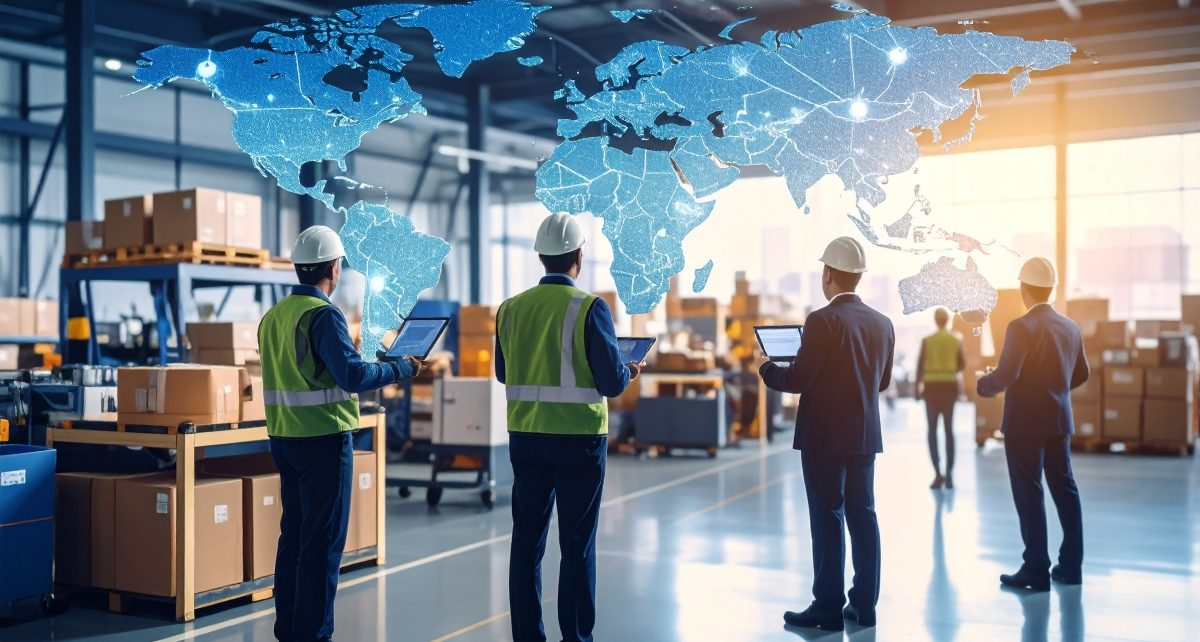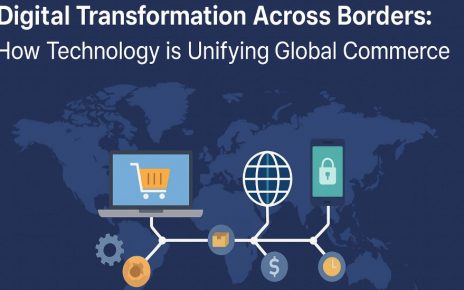Global supply chains, once built on the foundation of just-in-time efficiency and low-cost outsourcing, are now being reimagined for a world defined by disruption, unpredictability, and digital innovation. The past few years—marked by pandemics, geopolitical tensions, inflation, and climate-related shocks—have revealed serious vulnerabilities in the traditional global logistics model.
As we move through 2025 and beyond, supply chains are undergoing a profound transformation. Resilience, localization, and automation have emerged as the three core pillars reshaping how companies source, manufacture, and distribute goods on a global scale.
1. From Efficiency to Resilience
For decades, companies prioritized efficiency and cost-cutting in their supply chain strategies. The focus was on outsourcing production to the cheapest regions, reducing inventory levels, and optimizing transportation. But the COVID-19 pandemic, the war in Ukraine, and trade conflicts between major powers like the U.S. and China shattered the illusion of stability.
In 2025, resilience has taken center stage.
Key Resilience Strategies:
Supplier diversification: Instead of relying on a single supplier or region, companies are now working with multiple vendors across different geographies.
Inventory buffers: Businesses are building safety stock or “just-in-case” inventory to cushion against delays or shortages.
End-to-end visibility: Real-time tracking and predictive analytics are being used to monitor shipments, inventory, and risks across the entire supply network.
Scenario planning: Businesses are developing contingency models for events such as pandemics, cyberattacks, and political instability.
Companies that invest in resilient supply chains are better positioned to adapt quickly, minimize disruption, and maintain customer trust during crises.
2. The Rise of Localization and Regionalization
The days of hyper-globalized supply chains—stretching from Southeast Asia to North America to Europe—are giving way to more localized and regionalized models. This shift is driven by several forces:
Rising transportation costs
Carbon footprint concerns
Protectionist trade policies
Demand for faster delivery times
Instead of producing everything in one distant location, many companies are embracing “China+1”, “nearshoring”, or “reshoring” strategies to bring production closer to home or to politically aligned countries.
Examples of Localization Trends:
U.S. companies relocating manufacturing to Mexico and Central America
European firms investing in Eastern Europe and North Africa
Asian manufacturers expanding to Vietnam, India, and Indonesia
This regional approach reduces dependence on long and fragile supply chains, cuts lead times, and supports national economic policies promoting self-reliance.
3. Automation: The Smart Supply Chain Revolution
The future of supply chains is not only more resilient and local—it’s also intelligent. Automation, artificial intelligence (AI), and robotics are revolutionizing every node of the supply chain, from warehouse operations to predictive demand forecasting.
Key Technologies Driving Automation:
AI & machine learning: Algorithms can predict demand spikes, optimize delivery routes, and identify risks before they become problems.
Robotics: Automated guided vehicles (AGVs), robotic arms, and drones are streamlining manufacturing, picking, packing, and inventory tasks.
Internet of Things (IoT): Sensors attached to containers and products provide real-time data on temperature, location, and condition.
Digital twins: Virtual replicas of physical supply networks help companies simulate and optimize operations in a risk-free environment.
Automation doesn’t just increase efficiency—it enhances accuracy, safety, and adaptability, especially in labor-constrained environments.
4. Sustainability and ESG Pressures
Environmental, Social, and Governance (ESG) goals are no longer optional—they’re essential. Investors, regulators, and consumers are demanding transparency and accountability in how companies source, produce, and transport goods.
Supply chains are being redesigned to meet carbon reduction goals, ethical labor standards, and circular economy models.
Sustainability Initiatives in Supply Chains:
Carbon tracking tools that measure emissions across supply chain nodes
Green logistics powered by electric trucks, rail, and maritime solutions
Recyclable and biodegradable packaging
Supplier audits for compliance with labor and environmental regulations
Sustainable supply chains are not only good for the planet—they also build brand trust and meet growing regulatory demands in markets like the EU and North America.
5. Digital Integration and Data-Driven Collaboration
In the supply chain of the future, data is king. Silos are breaking down as digital platforms integrate every part of the chain—suppliers, manufacturers, shippers, retailers, and end consumers.
Cloud-based supply chain management systems allow for real-time collaboration and decision-making across continents.
Digital Tools on the Rise:
ERP (Enterprise Resource Planning) systems that unify operations
Blockchain for secure and transparent transaction records
Collaboration platforms that connect suppliers and logistics providers in real time
APIs and data lakes for centralized information sharing and insights
This connectedness ensures greater agility, enabling businesses to respond rapidly to changes in demand, supplier status, or geopolitical developments.
6. The Role of Governments and Trade Policy
Governments around the world are playing a more active role in shaping supply chains. Through trade agreements, tax incentives, and infrastructure investments, they are encouraging domestic production and strategic independence in key industries such as semiconductors, pharmaceuticals, and defense.
Countries like the U.S., India, and the EU are investing billions in resilient supply chain strategies, including onshoring critical manufacturing and building digital infrastructure for real-time trade monitoring.
This geoeconomic realignment is pushing companies to rethink where and how they do business globally.
7. Talent and Workforce Challenges
As technology transforms supply chains, there’s an urgent need for new skills in data analytics, robotics, cybersecurity, and logistics management. Labor shortages and the aging workforce in developed nations are pushing companies to invest in upskilling programs and automation to fill the gaps.
Hybrid models—where humans and machines work side-by-side—are becoming the new norm in factories and distribution centers.
Conclusion
The global supply chain of 2025 and beyond is being reshaped by necessity and innovation. The focus is no longer just on how cheaply something can be made and shipped—but how securely, quickly, and sustainably it can be delivered.
Businesses that embrace resilience, regionalization, and automation will be better equipped to thrive in a volatile world. Those that resist this transformation risk being left behind.
In the next decade, the most competitive supply chains will be those that are flexible, tech-powered, and values-driven—built not just to withstand disruption, but to turn it into opportunity.



